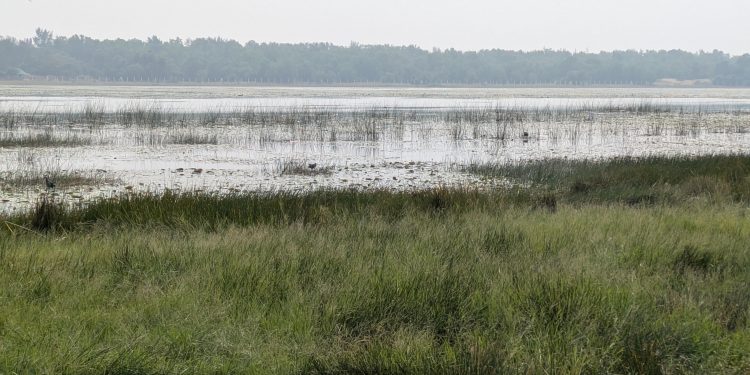Chhatrapur: Odisha, known for its growing tourism industry, attracts both national and international visitors owing to its scenic landscapes, including beaches, lakes, and lagoons. Among these natural wonders is Tampara Lake, located near Chhatrapur in Ganjam district, about 140km from Bhubaneswar. Easily accessible by road, rail, and air, the lake draws hundreds of tourists each weekend, year-round.
Spanning 7km along the Bay of Bengal coastline, Tampara Lake is home to a rich variety of flora and fauna, maintaining a healthy ecological balance. The isthmus of the lake is covered with a forest of oak, pine, mangrove, banyan trees, and wild shrubs, enhancing the serenity of the landscape. Recently, due to increased tourism, the government has developed resorts, restaurants, parks, and water sports facilities, further elevating the area’s popularity.
However, this development has a darker side. The growing number of visitors, coupled with unchecked construction around the lake, is contributing to water contamination. Waste disposal in the area is a common problem, affecting the lake’s ecosystem. Despite the importance of maintenance in preserving such a geographically significant site, Tampara Lake is suffering from a lack of proper upkeep.
Water sports, while providing entertainment, are also harming marine life. The noise, smoke, and artificial whirlpools caused by motorboats threaten the delicate aquatic ecosystem. In winter, migratory birds from Siberia and far-off areas, find refuge in Tampara besides Chilika Lake. However, the noise from motorboats causes distress among these birds, disrupting their peaceful environment. If this continues, the lake may no longer be an attractive destination for migratory birds, which depend on calm, quiet spaces and suitable temperatures.
Additionally, the water level in Tampara is declining each year due to below-average rainfall in the region. This, combined with pollution, threatens the aquatic species that live in the lagoon, including fish and prawns. Though the damage may not be visible above the water’s surface, it poses a significant risk to the marine life beneath.
Also Read: Literature on wheels: Authors share culinary quest
On the other side of the lagoon, the forest is also facing threats. Some species of trees, such as oak-pine, which are integral to the area’s identity, are nearing extinction. Though cyclones have caused some tree loss, locals suspect illegal deforestation is also a problem. Timber is often cut and sold to external vendors, who resell it at a higher price. Without proper supervision, the area’s natural beauty could be irreversibly damaged, leaving the once-thriving ecosystem in ruins.
To protect this iconic location, both the local community and tourists have a responsibility to help preserve its beauty. Strict monitoring and conservation efforts are crucial to safeguarding Tampara Lake’s biodiversity and ensuring its future.
PNN






































